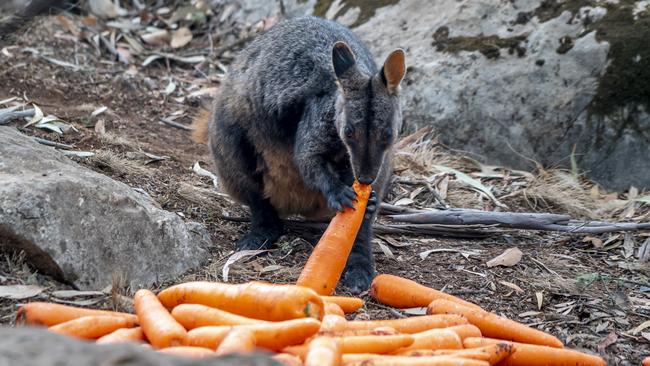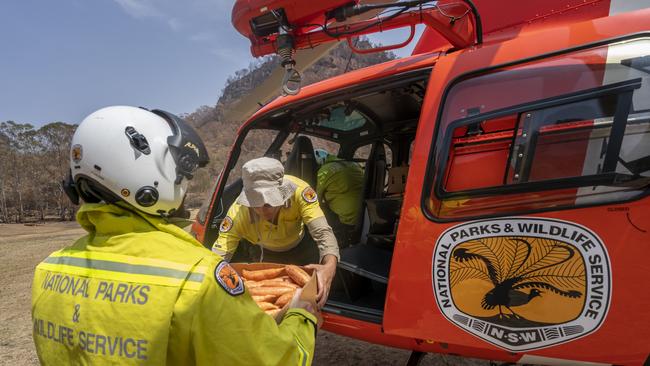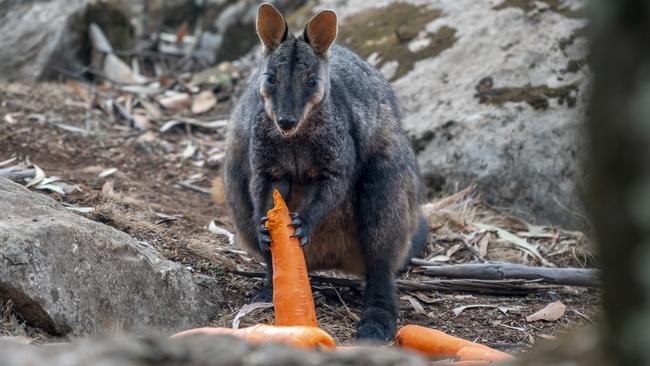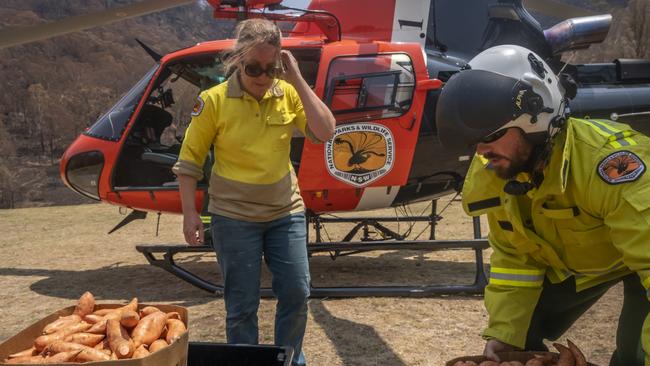NSW Bushfires: Wallabies air-dropped carrots and sweet potatoes
Operation Sweet Potato is underway in NSW, with tonnes of vegetables thrown out of helicopters to help animals in bushfire-ravaged areas.

NSW
Don't miss out on the headlines from NSW. Followed categories will be added to My News.
Tonnes of carrots and sweet potatoes have been thrown out of helicopters to help feed endangered wildlife in bushfire ravaged areas across NSW.
Huge expanses of national parks have been destroyed since the bushfires first started in September.
Already there has been 5.2 million hectares of land burnt in this unprecedented season.

Lobbying from wildlife activists persuaded Environment Minister Matt Kean to make the decision to disperse tonnes of vegetables to help NSW’s brush-tail rock-wallaby population.
“The provision of supplementary food is one of the key strategies we are deploying to promote the survival and recovery of endangered species like the brush-tailed rock-wallaby,” Mr Kean said.
“Initial fire assessments indicate the habitat of several important brush-tailed rock-wallaby populations was burnt in the recent bushfires.
“The wallabies typically survive the fire itself but are then left stranded with limited natural food as the fire takes out the vegetation around their rocky habitat.
“The wallabies were already under stress from the ongoing drought, making survival challenging for the wallabies without assistance.”

In the past week, almost a tonne of sweet potatoes and carrots was dropped to six colonies in the Capertee and Wolgan Valley as well as five sites in the Yengo National Park.
There has also been almost 100kg of food and water delivered to the Kangaroo Valley.
The Daily Telegraph understands this is just one of a number of “stopgap” measures the government has planned to help wildlife during the bushfire crisis.
Government officials have been investigating whether entire species of animals have been wiped out due to the unprecedented fires.
However Minister Kean expects these food drops to help maintain the population of the rock wallabies.
“At this stage, we expect to continue providing supplementary food to rock wallaby populations until sufficient natural food resources and water become available again in the landscape, during post-fire recovery,” he said.


